Lantern Festival — Pingxi _ Taiwan
Lantern Festival
Taiwan Lantern Festival
The Tourism Bureau has been holding the Taiwan Lantern Festival for years to attract visitors and raise the international profile of the cultural attractions of Taiwan.
Traditionally, the festival has been celebrated by carrying hand lanterns. The Taiwan Lantern Festival adds a high-tech touch to this traditional custom and brings the event to the international stage. From the theme lantern displays to folk arts and performances, the festival has become a favorite of both locals and foreign visitors.
Taipei & Kaohsiung Lantern Festivals
Colorful lanterns of all sizes and shapes have always been the main feature of the Lantern Festival, which is celebrated with a grand national festival and major festival in Taipei and Kaohsiung.
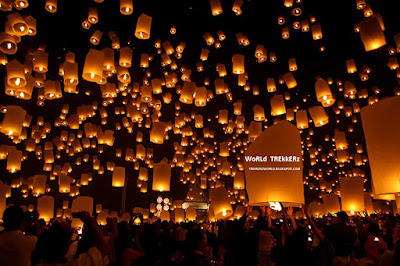 The Taipei Lantern Festival is held for several days at the Taipei Expo Park, reaching its peak on the day of the Lantern Festival itself. There are many traditional lanterns, electromechanical lantern displays, and large themed lanterns sponsored and designed by different companies.
The Taipei Lantern Festival is held for several days at the Taipei Expo Park, reaching its peak on the day of the Lantern Festival itself. There are many traditional lanterns, electromechanical lantern displays, and large themed lanterns sponsored and designed by different companies.The Kaohsiung Lantern Festival is held along the Love River. During the festival period, both sides of the river as well as Wufu Rd., Heping Rd., Guangzhou St., and other thoroughfares have lantern exhibitions. There are also musical performances, helping to throw the whole city into a festive mood.
Pingxi(Pingsi) Sky Lantern Festival
The Pingxi Sky Lantern Festival is one of the most colorful activities of the Lantern Festival. Pingxi is a remote hillside town. In the past, those who worked or farmed in the mountains faced the risk of being robbed or killed, and they used lanterns to inform their families they were safe. The lanterns do not function as signals anymore, but are now used as symbols of peace and good fortune.
Yenshui Fireworks Festival
The fireworks display at the God of War Temple in Yanshui, Tainan City, is one of the most popular and anticipated events of the Lantern Festival.
The display starts one day before the Lantern Festival, when the deity tours the town in his sedan chair, accompanied by the discharge of firecrackers and bottle rockets. The noise, lights, and rituals that follow the god continue well into the following morning.
Bombing of Master Han Dan
The Lantern Festival is celebrated on the 15th day of the first month of the Chinese lunar calendar with a series of activities throughout Taiwan.
 Among the highlight events at this time is the inspection tour of the deity Master Han Dan in Taitung City. As guardian of the celestial treasury, Master Han Dan is revered today as a God of wealth, but people believe that he was once a real person named Zhao Gong-ming.
Among the highlight events at this time is the inspection tour of the deity Master Han Dan in Taitung City. As guardian of the celestial treasury, Master Han Dan is revered today as a God of wealth, but people believe that he was once a real person named Zhao Gong-ming.When the Master Han Dan makes his annual inspection tour of the earthly world, crowds turn out to pray for his blessing and for good fortune.
On the day of the festival, Master Han Dan is joined on his tour of the community by gods from, other temples in Taitung and surrounding townships.
Households along the route of the divine procession prepare offerings of fresh flowers and fruit, and light strings of firecrackers to welcome the Master Han Dan. The person representing the Master Han Dan on the tour wears only a headscarf, mask and pair of red short. He stands courageously amid the fusillade of firecrackers, protected only by a tree branch.
There are several stories as to why the people throw firecrackers at Master Han Dan. In one version, Master Han Dan is the god of hooligans and his power grows with the loudness of the explosions. A less widely accepted explanation is that Master Han Dan is afraid of the cold, so the people throw firecrackers at him to keep him warm and win his blessing.
Taiwan Lantern Festival
The Taiwan Lantern Festival (Chinese: 臺灣燈會; pinyin: Táiwān dēnghuì) is an annual event hosted by the Tourism Bureau of the Ministry of Transportation and Communications in Taiwan to celebrate the Lantern Festival.
 There are many activities all over Taiwan during Taiwan Lantern Festival.
There are many activities all over Taiwan during Taiwan Lantern Festival.During the Taiwan Lantern Festival, thousands of sky lanterns light over Pingxi District (平溪) in Taiwan. In Yanshui District, the firecrackers ceremony of Wumiao Temple is also one of the important activities.[citation needed].
The Tainan Yanshui Fireworks Display ("beehive of fireworks") was originally celebrated to ward off evil and disease from the town. The Taipei Pingxi Sky Lanterns were released originally to let others know that the town was safe. These lanterns are decorated with wishes and images relating to the owner. These two events are known together as "Fireworks in the South, Sky Lanterns in the North."
History
Starting from 1990, the Tourism Bureau integrated civilian and local governmental resources to conduct the event to celebrate the Lantern Festival (fifteenth day of the first month in the lunar calendar) and the end of the Chinese New Year. The purpose of the festival is to spread the traditional folklore. It is also known as the Yuan Xiao Festival.
The firecrackers ceremony of the Wumiao Temple in Yanshui District was held by ancient people, in order to show respect for the exploits of Guan Yu.
Fengpao is the ceremony to start to burn thousands of soaring firecrackers hung on a five to twenty-five meters high wooden stand. This ceremony starts from six o'clock in the afternoon until five o'clock in the morning.
Thousands of people and visitors attend the ceremony.[citation needed]
The festival is the most important annual lantern festival in Taiwan. Prior to 2001, the event was held at Chiang Kai-shek Memorial Park in Taipei. Since 2001, the event has toured Taiwan.
The American Discovery Channel's program "Fantastic Festivals of the World" has highlighted the Taiwan Lantern Festival as one of the best festivals in the world.
Time and Locations
1990: February 10~12, Chiang Kai-shek Memorial Hall, Taipei City.
1991: March 1~3, Chiang Kai-shek Memorial Hall, Taipei City.
1992: February 12~18, Chiang Kai-shek Memorial Hall, Taipei City.
1993: February 6~8, Chiang Kai-shek Memorial Hall, Taipei City.
1994: February 24~27, Chiang Kai-shek Memorial Hall, Taipei City.
1995: February 14~16, Chiang Kai-shek Memorial Hall, Taipei City.
1996: March 4~6, Chiang Kai-shek Memorial Hall, Taipei City.
1997: February 21~23, Chiang Kai-shek Memorial Hall, Taipei City.
1998: February 11~15, Chiang Kai-shek Memorial Hall, Taipei City.
1999: March 2~7, Chiang Kai-shek Memorial Hall, Taipei City.
2000: February 19~27, Chiang Kai-shek Memorial Hall, Taipei City.
2001: February 7~14, Love River, Kaohsiung City.
2002: February 26~March 3, Love River, Kaohsiung City.
2003: February 15~23, Taichung Park and Jingguo Blvd., Taichung City.
2004: February 5~15, Banqiao City, Taipei County (Now is Banqiao District, New Taipei City).
2005: February 23~March 6, Anping Coastal History Park, Tainan City.
2006: February 12~26, Anping Coastal History Park, Tainan City.
2007: March 3~11, Taibao City, Chiayi County.
2008: February 21~March 2, Southern Taiwan Science Park, Tainan County (Now is merged into Tainan City).
2009: February 9~22, Yilan Sports Park, Yilan City, Yilan County.
2010: February 28~March 7, Chiayi Park, Chiayi City.
2011: February 17~28, Zhunan and Toufen Sports Park, Miaoli County.
2012: February 6~19, Lukang Township, Changhua County.
2013: February 24~March 10, THSR Hsinchu Station, Zhubei City, Hsinchu County.
2014: February 14~23, Zhongxing New Village, Nantou County.
2015: March 5~15, THSR Taichung Station, Taichung Park and Fengyuan District, Taichung City.
2016: February 22~March 6, THSR Taoyuan Station, Taoyuan City.
2017: February 11~February19, THSR Yunlin Station, Yunlin Province.
Main lantern
The theme of the main lanterns often corresponds with the zodiac signs of Chinese astrology. All of them are over ten meters tall. Since 1999, every main lantern has its own theme music which is about 3 minutes in length and plays the rhythm when making performances during Taiwan Lantern Festival.
Tradition has it that the “sky lantern” was invented during the Three Kingdoms period (AD 220-265) by Zhuge Liang.
At first it was used to transmit military information, different from beacon towers yet ingeniously serving the same function, and is now generally recognized as the earliest ancestor to the hot air balloon.
In the early 19th century the Lantern Festival was brought to Taiwan, where every year, at the beginning of the spring planting season, people would release “sky lanterns” into the air as a prayer for the coming year.
Because in olden times marriage was for the purpose of “adding a son” and increasing manpower, people went to the temple to pray for blessings and released sky lanterns on which they had written things like “May a son soon be born.” and “May the harvests be bountiful.” Sky lanterns were released to follow the wind, rising up to the ancestors to report that all was well and to pray for blessings.
 Slowly this evolved to become a local event for the Yuanxiao Festival in the Pingxi area.
Slowly this evolved to become a local event for the Yuanxiao Festival in the Pingxi area.Through many, many years of changes, the one thing that never changed was the reflected lives and hopes of the people as the sky lanterns slowly rose aloft. For many years the “Pingxi Sky Lantern Festival” has had a brilliant history.
In addition to enjoying its reputation as part of the traditional description of this Yuanxiao or Lantern Festival in Taiwan—“Sky lanterns in the north, beehive fireworks in the south.”—the Pingxi Sky Lantern Festival was voted by the Discovery Channel as the second biggest New Year’s Eve celebration in the world, a festival whose sky lanterns carry the prayers and vows of the people and by which they seek the purification of their souls, a festival that advertises the Taiwan spirit to the world.
In addition to the folk performances, lantern riddle contests, and street folk carnivals that are organized every year, the sky lanterns carrying prayers aloft remain the focal point of the entire event.
The lanterns are lit, hopes slowly rise, and the flames of prayer dance in the air as the lanterns magically transform into wings of hope and desire, turning the night sky of this mountain town into an expanse of unimaginable beauty. T
 he visual enjoyment of his fantastic and magnificent sight transcends cultural barriers so when festival time arrives each year, Pingxi is always overwhelmed with visitors. The sight of sky lanterns with their lights rising slowing into the sky is for many Taiwanese a beautiful memory and the beginning of happiness and dreams.
he visual enjoyment of his fantastic and magnificent sight transcends cultural barriers so when festival time arrives each year, Pingxi is always overwhelmed with visitors. The sight of sky lanterns with their lights rising slowing into the sky is for many Taiwanese a beautiful memory and the beginning of happiness and dreams.About This Festival
Location Unconfirmed
Multiple Locations in Pingxi| Pingxi, Taiwan
While Chinese New Year tends to get all the attention, one of the more subtle and beguiling celebratory days in the Chinese calendar is the annual Sky Lantern Festival. In a blaze of luminous glory, 100,000 to 200,000 hot air balloons emblazon a full moonlit sky. Although the holiday is celebrated all across Asia, nowhere in the world is it more recognized than Pingxi, a remote mountain town an hour-long drive from Taipei.
Ancient History & Old Street
According to the elders of Pingxi, the Sky Lantern Festival originated in the Xing Dynasty, more than two thousand years ago.
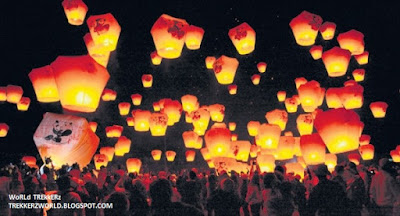 At that time, bands of outlaws frequently raided the lowland villages, forcing residents to seek refuge in the lush, verdant mountains. Village watchmen used “fire balloons” as signals to inform the refugees that their houses were safe once again. When those hiding in the hills saw the celestial flares, they knew it was time to go home.
At that time, bands of outlaws frequently raided the lowland villages, forcing residents to seek refuge in the lush, verdant mountains. Village watchmen used “fire balloons” as signals to inform the refugees that their houses were safe once again. When those hiding in the hills saw the celestial flares, they knew it was time to go home.Upon arriving in Pingxi, you can either walk along Old Street or head directly to the main stage. We’d recommend hitting the Old Street first to get a more intimate experience of the main commercial thoroughfare before the 80,000 festival attendees arrive.
Watching Dreams Take Flight
The main activity is to buy a lantern, scribble your desires and ambitions on it, then send it into the heavens. The lanterns are made out of oiled rice paper, sheepskin, bamboo filaments, silk, or satin outfitted with a large candle at the bottom.
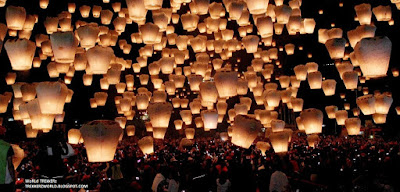 As the lamps heat up, they take flight and linger in the air for as long as the flame still flickers. The base for individual launches is at the risky location of the railroad tracks on Old Street. Trains pull through every 15 minutes, forcing people to scatter to the sides.
As the lamps heat up, they take flight and linger in the air for as long as the flame still flickers. The base for individual launches is at the risky location of the railroad tracks on Old Street. Trains pull through every 15 minutes, forcing people to scatter to the sides.After ambling a half-mile down Old Street, you’ll arrive at the main stage. In contrast to the down-home feel of the town’s principle road, you can tell that a major production has been bustling on this side of town: big screens, television cameras, celebrities and musicians are everywhere.
 The scene requires enormous crowd control, the ushering people in and out of prime viewing spots. Don’t be surprised if you get jostled or elbowed in the gut.
The scene requires enormous crowd control, the ushering people in and out of prime viewing spots. Don’t be surprised if you get jostled or elbowed in the gut.The collective launches start at 6:30 pm and happen three times an hour until 9:30 pm. At the main stage, hundreds of dreams skyrocket upward all at once. It’s breathtaking to see the pitch-dark firmament, uncorrupted by light pollution, suddenly turn crimson against a backdrop of jagged peaks. Not only did lanterns act as signaling devices in ancient Pingxi, but they also commemorate the official end of Chinese New Year. Their release symbolizes the shedding of outdated ways and the embracing of an optimistic and fortuitous future. When the luminous sensations touch down, it’s with great hope that one’s lofty aspirations can be brought to fruition in the upcoming year.
PINGXI SKY LANTERN FESTIVAL 2016 IN TAIWAN
The Lantern Festival is one of Taiwan’s tourism highlights and takes place annually during Chinese New Year. It is consistently listed in travel guides as a “must see” for international travelers around the globe. Although there is only a short window of opportunity to take in the festival, and there are guaranteed to be crowds, the night sky illuminated with countless floating lanterns is an enchanting sight that is rarely viewed elsewhere in the world.
The major lantern festival sponsored by the national government is referred to as Taiwan Lantern Festival, and takes place in a different geographical location each year.
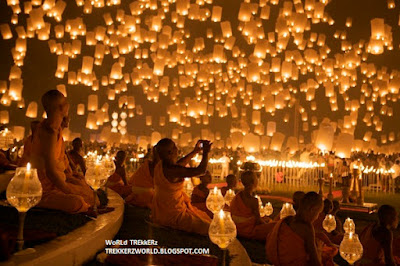 It therefore requires some advanced trip planning, which may not work into every traveler’s schedule. However, the Pingxi Sky Lantern Festival (平溪天燈) is held in the same location (Pingxi, just outside Taipei) and on similar lunar calendar dates every year, making trip planning slightly easier. The history of the sky lantern in Pingxi goes back over a hundred years, as it was used as a method for sending one’s wishes up to God (or one’s ancestors in heaven).
It therefore requires some advanced trip planning, which may not work into every traveler’s schedule. However, the Pingxi Sky Lantern Festival (平溪天燈) is held in the same location (Pingxi, just outside Taipei) and on similar lunar calendar dates every year, making trip planning slightly easier. The history of the sky lantern in Pingxi goes back over a hundred years, as it was used as a method for sending one’s wishes up to God (or one’s ancestors in heaven).The festival however, where thousands of lanterns and personal wishes are released into the sky simultaneously, only began a couple decades ago. The festival’s majestic beauty and convenient access from the Taipei metropolis has seen the event rapidly grow in popularity, and has attracted the attention of major international media outlets.
 The festival made it onto National Geographic’s 10 Best Winter Trips list. The Discovery Channel has named it the second largest nighttime festival in the world. CNN Travel named it one of the top things to do in 2013, and Fodor’s Travel Guides named it one of the 14 festivals a person must see in their lifetime.
The festival made it onto National Geographic’s 10 Best Winter Trips list. The Discovery Channel has named it the second largest nighttime festival in the world. CNN Travel named it one of the top things to do in 2013, and Fodor’s Travel Guides named it one of the 14 festivals a person must see in their lifetime.Pinxi is the only place in Taiwan where sky lanterns can be released legally, as it has been deemed a safe location due to its location high in the mountains, its significant annual rainfall, and high humidity level. Festival viewers will be glad to know that it is also one of the places with the lowest amounts of light pollution in Taiwan due to the low population density, which means the lanterns appear all the more beautiful and distinct in the sky.
The lantern festival is held to celebrate the first full moon of Chinese New Year, which is the 15th day of the first month in the lunar calendar (not to be confused with the western calendar), and is when the main celebrations occur.
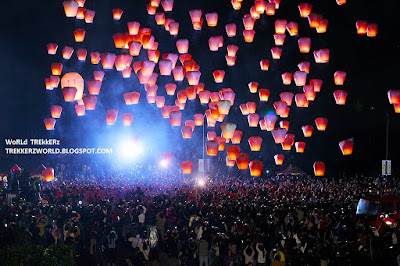 However, the Pingxi Sky Lantern Festival events are now held in three slightly different locations within Pingxi over three dates during the new year’s period. This is also the last official day of the Chinese New Year period. An overview of the three days of events is listed below:
However, the Pingxi Sky Lantern Festival events are now held in three slightly different locations within Pingxi over three dates during the new year’s period. This is also the last official day of the Chinese New Year period. An overview of the three days of events is listed below:To participate in the official sky lantern launching, advance registration is usually required, but if you are prepared with your own lantern and a few spots open up towards the end of the festival, organizers will generally let you sneak into the back and participate in the official launching. Even if spots do not open up, you are free to release your own lantern after the official launching has finished, or from different areas of Pingxi around the official grounds.
There will be plenty of tents selling lantern kits, so you don’t need to bring anything to the festival grounds.
Pingxi Sky Lantern Festival: A Real Treat to Eyes
In Taiwan, each year, the whole country shares the commitment to the tradition of lanterns. In temples like in offices, stores or train stations, they are everywhere. Bursts of colors and poesy, they hold wishes for the New Year: happiness, health, prosperity, love… The lanterns are also pretexts for many major festivals, among them, that of Pingxi that is undoubtedly the most original and most moving of them. Pingxi’s Lantern Festival is one of Asia’s most iconic festivals and an event to which millions of tourists flock to attend every year.
Historical Background
There are many hypotheses as to the origins of this tradition. Some say they were invented by Zhuge Liang (181-234, a famous Chinese strategist from the Three Kingdoms era) who used them as a military means of communication to prevent an enemy raid.
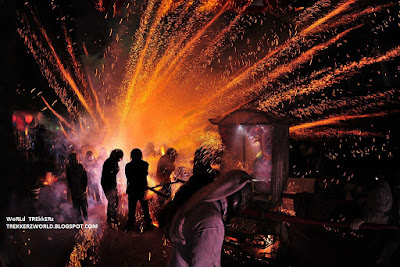 Others say that originally, the Lantern festival comes from a popular belief from ancient China. According to this theory, it was possible to see the spirits fly in the light of the first full moon of the year. Their search of the spirit by the lights of torches, those were left in favor of lanterns and the lantern festival was born. Today, the Lantern Festival honors the sky and the stars, the “tai yi” or the “Supreme Unity”.
Others say that originally, the Lantern festival comes from a popular belief from ancient China. According to this theory, it was possible to see the spirits fly in the light of the first full moon of the year. Their search of the spirit by the lights of torches, those were left in favor of lanterns and the lantern festival was born. Today, the Lantern Festival honors the sky and the stars, the “tai yi” or the “Supreme Unity”.Although maybe religious in origin, the Lantern festival has become a popular festival, which attracts millions of tourists and curious in Taiwan. Another possibility though is that the residents of Pingxi, inside their picturesque valley, have updated a technique inherited from their ancestors. Those, at a time when the region was still infested by brigands, sent up in the air small balloons made of rice paper sheets to report the threat and end the danger. These balloons have since been supplanted by the lanterns which held inscriptions of vows. Over the years, more and more people joined in the custom, to the point that it became an international event.
The Festival Now
For travelers in search of the most impressive festivals in the world, here is one to mark in your calendar: the Lantern Festival in Pingxi. Also known as the “Little New Year”, the Lantern Festival of Pingxi is live every night for ten days. Near the banks of Pingxi, as the ancestral tradition goes, you have to take a lantern, on which you will write a wish before the blowing it away.
 Messages in any language, of love, health, wealth… you name it! On this occasion, many Taiwanese take days off to spend with family or for sightseeing.
Messages in any language, of love, health, wealth… you name it! On this occasion, many Taiwanese take days off to spend with family or for sightseeing.Taiwanese families march together holding lanterns of different shapes and sizes, inspired by the zodiac sign of the year; on their flanks they wrote their wishes for themselves and their loved ones. Held at Chiang Kai-shek memorial, each year the festival is built around a new theme based on the zodiac animal of the year: countless lanterns decorations, dragon and lion dances, folk art performances, acrobatic shows and solemn processions in front of the temples; a lot of entertainment that the Lantern festival now lasts 3 days. Boulevards, temples and parks are adorned with colored lanterns and lights.
There are official launches, where the municipality provides free thousands of these lanterns. Coated in vows marked on the sides, they fly in waves toward the sky.
 The city finds itself transformed by the appearance of thousands of lanterns of all sizes, sometimes of gigantic proportions, taking the most diverse forms. They represent characters from comic books, cartoons, or Hollywood movies, one more colorful than the other, standing out against the darkness of the night. Feast for the eyes, and taste buds also, this festival attracts large crowds in a friendly and joyful atmosphere.
The city finds itself transformed by the appearance of thousands of lanterns of all sizes, sometimes of gigantic proportions, taking the most diverse forms. They represent characters from comic books, cartoons, or Hollywood movies, one more colorful than the other, standing out against the darkness of the night. Feast for the eyes, and taste buds also, this festival attracts large crowds in a friendly and joyful atmosphere.To see all these lanterns with their flickering lights rise into the night and disappear like increasingly small fireflies, brings tears to the eye of the most hardened! They carry the hopes of so many people, gathered in brotherly tide.
Where
The Lantern Festival is held in Pingxi ‒ easily accessible by public transport ‒ a small town famous for its waterfalls, lost in the hills northeast of Taipei. Taipei, the sleepy little town of the early twentieth century, which is now a fascinating multi-million metropolis. In place of rice fields which, three hundred years ago, stretched further than the sight could reach, stand now fully glazed office buildings, luxurious apartments and modern malls in the wide tree-lined boulevards. Yet deep inside, it remained Chinese: behind its modern façades, culture and lifestyle persist.
When
Pingxi’s Lantern Festival is held every year ‒ two weeks after the Chinese New Year, celebrating and marking its end ‒ from the 15th day of the first lunar month, that is to say the end of February or early March depending on the year. This year, the festival took place from 22 February to 6 March 2016.
How to get there?
From Taipei:
MRT station go to MRT Taipei Zoo ($40 TW), from there, it is easy to spot the bus shuttles that are working from 9 am until 19 pm to Pingxi. The price is $ 50 TW for the round trip, payable by Easy Card or in cash (+ – 30 minute trip by shuttle bus or by metro.)
The shuttle stops at a walking distance from the main event; depending on the day of the week, the stop maybe Bashi village or Nanshan Bridge, Shifen.
Back to Taipei:
The bus for return is free between 23:00 10:00am. Last stop for the MRT Taipei Zoo. You can also take the metro to go back ($ 40 TW) For the return it is better to remember where you got off the first time and take the same bus back to the same place to be sure. Note that the human line can seem downright impressive, but do not worry, if you choose to stand up in line (rather than waiting in a seat) it will advance quickly enough despite the hundreds and hundreds of people. Everything is well organized.
But what is the meaning of all the colors?
As is always the case with Chinese symbolism, every and each color used to paint the lanterns has a specific association. Here is a quick interpretation of the various colors of the lanterns that you may find:
Red: that by far the most popular color, associated with good health.
Rose: as you may have guessed is for love.
White: that is for a bright future.
Blue: great opportunities at work.
Green: specifically for a good professional promotion.
Mauve: for the less inspired, mauve is to ask for Intelligence!
Peach: a good marriage.
Orange: for those feeling unlucky, that’s for Luck.
Yellow: Wealth, obviously
…. and finally, for the undecided: they sell lanterns with 4 COLORS!
How to participate
To assist in the official launch, you must register in advance. The best is to just admire those official launches. Alternatively, you can launch your own lanterns all day or evening. A lantern costs between 150 to $200 TW or higher depending on the size and the shape you like. You would write vows, wishes or just plain messages on the sides and then you have to find the perfect place to start. The railway is really a popular spot; once there, no entrance fee is needed, access is free.
Bonus
After a long day and portion of the night launching and admiring the lanterns, you must be hungry and, luckily enough, you can’t find better place to be. Engulfing Pingxi and the festival, is Taipei, that is to say, the Asian cuisine at its finest. The Taiwanese gastronomy has been deeply influenced by those of Fuzhou, Chaozhou , Cantonese and half a century of Japanese colonial rules. Taiwanese food itself has not remained much authentic because its very philosophy emphasizes the use fresh ingredients and light flavors. Taiwan being an island, fish and seafood are available in abundance and therefore occupy a prominent place in the local cuisine.
Cooking techniques most often used – the food is seized or returned to the hot wok – preserve the taste and nutritional qualities of the ingredients.
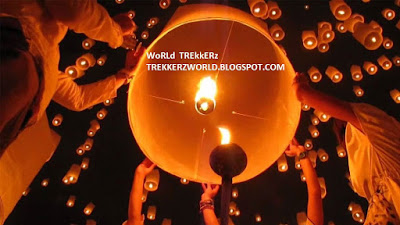 While being in Taipei, you can also take the opportunity to visit the Chiang Kai Shek memorial, which is located in the center of city; built thanks to donations received from Chinese all over the world in tribute to the late President Chiang Kai Shek. You may be able to attend the highly ceremonial Changing the guard, depending on the time of your passage.
While being in Taipei, you can also take the opportunity to visit the Chiang Kai Shek memorial, which is located in the center of city; built thanks to donations received from Chinese all over the world in tribute to the late President Chiang Kai Shek. You may be able to attend the highly ceremonial Changing the guard, depending on the time of your passage.During the days of festival, travel prices on the island are particularly advantageous because many tourist hotels offer discounts. Also offered are train and shuttle bus packages at reduced prices. You can make the most of your stay taking advantage of the very interesting rates in terms of transport, accommodation, or even regarding entry prices in tourist sites (such as nature reserves, national parks and museums.)
That is what makes from the Lantern Festival of Pingxi period maybe the best time to visit Taiwan.
Sky Lanterns in Taiwan
Lighting Up The Skies For Luck
One of the most memorable scenes from the 2011 award-winning Taiwanese movie You Are The Apple Of My Eye showed the lead characters jointly releasing a tiandeng (sky lantern) with their wishes on it.
The young couple penned their hopes on the bulbous-shaped paper creation and watched it drift off in the clear sky.
This gesture of sending one’s written wishes upwards to be blessed by divine forces may seem old-fashioned in the digital age, but this tradition remains strong in Taiwan.
Seeing the light
The sky lanterns are popular with people who want to be blessed for various reasons, including students eyeing good grades, lovers hoping for a happy ending and workers aiming for career success. Even married couples keen to have children want to be blessed because the local pronunciation of sky lantern is tiending, which sounds like “newborn son”.
Sky lanterns are made with rice paper, thin bamboo strips and wire and are powered by kerosene-soaked prayer papers.
When set alight, the hot air propels the paper creation to over 500m, or as high as Taipei 101, Taiwan’s iconic skyscraper.
After five to eight minutes airborne, the sky lantern falls and can be a fire hazard if it is still burning when it lands.
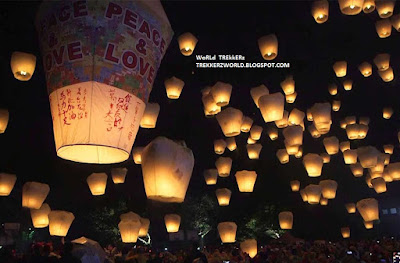 A mountainous region at the Pingxi district in northern Taiwan has been designated the only legal and most suitable area where tiandeng can be released.
A mountainous region at the Pingxi district in northern Taiwan has been designated the only legal and most suitable area where tiandeng can be released.The mountain ranges are said to provide the best natural screen to keep the sky lanterns from straying beyond the area.
There is also a lower risk of fire as Pingxi experiences rain about 200 days a year and its relative humidity is over 75 per cent.
Also, with only about 2,400 households and low light pollution in the area, the beauty of the thousands of sky lanterns lighting up the sky at night can be enjoyed to the fullest.
A sky lantern can be released any time of the year but its popularity soars during Chinese New Year.
Many Taiwanese believe in releasing a lantern personalised with their wishes to begin the new year on a high.
Fun and food
The mass release of lit sky lanterns is heartwarming and visually stunning, and I witnessed this during the 14th Pingxi Sky Lantern Festival earlier this month.
Held annually during Chinese New Year, the highlight of the four-day event was the mass celebration on Feb 4 attended by Taiwanese President Ma Ying-jeou and top government officials.
Joining in the fun were thousands of Taiwanese who did not let the light rain and falling temperatures dampen their celebratory mood.
Making their way into the Pingxi district that Saturday were multi-generational families with children perched on their fathers’ shoulders, giggling groups of teenagers and couples openly displaying their affection.
Their destination was Shifen, a rustic town in the district famed for its natural waterfalls, dense mountain ranges and antiquated architecture.
 Every 15 minutes or so, more people arrived on a train moving leisurely along a track flanked by shops and houses along the Shifenliao Old Street.
Every 15 minutes or so, more people arrived on a train moving leisurely along a track flanked by shops and houses along the Shifenliao Old Street.As the track was not cordoned off, there were ample opportunities to take unobstructed shots of the train pulling into Shifen station and unloading its passengers.
Food outlets selling noodles did brisk business with every seat occupied by patrons enjoying their steaming hot orders.
Snacks like Taiwanese sausages and sticks of corn were snapped up as soon as they came off the grill.
Buy or make your own
At the stalls selling sky lanterns, the action was non-stop as people prepared their selections for use when night fell and the timing was right.
 A ready-to-use sky lantern costs around NT$100. If you prefer to make your own, DIY sets cost under NT$20 each.
A ready-to-use sky lantern costs around NT$100. If you prefer to make your own, DIY sets cost under NT$20 each.Glueing four pieces of coloured sevensided paper may seem like child’s play but if you get the overlapping dimensions wrong, your sky lantern may be lopsided, affecting its flight.
When dusk fell, the sky cleared and the crowds at the Shifen Sky Lantern Square — where most of the action was — swelled until it was standing room only.
Visually stunning night
Throughout the night, thousands of sky lanterns were set airborne radiating an orange glow over everyone’s faces.
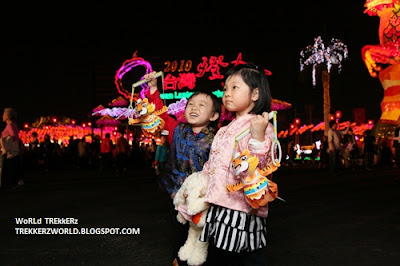 The lanterns lit up the night sky and bobbed quickly across the treetops towards the mountain ranges.
The lanterns lit up the night sky and bobbed quickly across the treetops towards the mountain ranges.Festival organisers released 1,600 sky lanterns and a specially constructed 6m version to mark the Year of the Dragon, a zodiac sign considered most auspicious by the Chinese.
Thousands of people turned up that night, bringing the number of visitors over 12 days to around 450,000. The festivities added much excitement to the sleepy district of Pingxi, which has a population of less than 6,000.
I left with memories that will linger long after the flame of my sky lantern has burnt out.
Getting there
From Taipei main station, catch a train to Ruifang and connect to the Pingxi branch line, where an all-day travel pass costs less than NT$100. At Pingxi district, alight at the Shifen train station, where most of the sky lantern action is.
Traveller’s tips
■ Instead of staying in the Pingxi district, make a day trip from Taipei as the city offers more accommodation options.
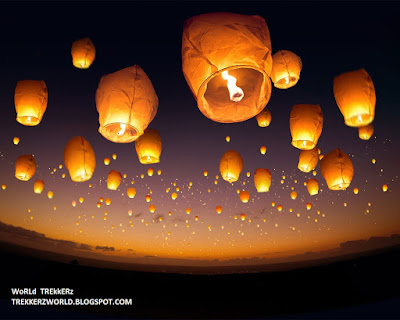 Depending on traffic and weather conditions, the journey up the mountain by road to Pingxi may take a couple of hours.■
Depending on traffic and weather conditions, the journey up the mountain by road to Pingxi may take a couple of hours.■The Pingxi Sky Lantern Festival is a local favourite, so be prepared for crowds, especially during the weekends.
As soon as you have explored the area, leave Pingxi or you will be stuck in massive human and traffic jams as everyone moves out at the same time.■
Wear covered walking shoes to protect your feet in the crowded areas and to navigate the uneven terrain in certain parts of the town.■ During winter nights and especially if it rains, the outdoor temperature could suddenly drop, so take a waterproof coat, a scarf, gloves and a collapsible umbrella.
A torch will be handy as some areas are not lit.■ Stay clear of food and drinks sold by street vendors if you do not have a strong stomach. Portable toilets are available but during the peak season, there will be long Stalls selling sky lanterns have areas for customers to pen their wishes on paper.
Overview
51
Pingxi Sky Lantern Festival is an event and I like events. Pingxi Sky Lantern Festival is one of the more subtle and beguiling annual celebratory days in the Chinese calendar.
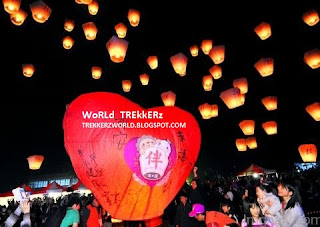 In a blaze of luminous glory, 100,000 to 200,000 hot air balloons emblazon a full moonlit sky. Originally the lanterns were released to let refugees hiding in the hills know that their town was safe and they could return home again.
In a blaze of luminous glory, 100,000 to 200,000 hot air balloons emblazon a full moonlit sky. Originally the lanterns were released to let refugees hiding in the hills know that their town was safe and they could return home again.As each year passes on the lunar calendar, people gather by the tens of thousands in the Pingxi District of New Tapei City to write their dreams and desires on lanterns and then release them into the sky.
Over 100,000 lanterns ranging in size, shape and color are lit, and visitors are more than welcome to contribute their own lantern to the glowing swarm. Other entertainment surrounding the festival includes a lantern riddle competition, a carnival and area folk music.
Although the holiday is celebrated all across Asia, nowhere in the world is it more recognized than Pingxi, a remote mountain town an hour-long drive from Taipei.
Available services for Pingxi Sky Lantern Festival
From corporate hospitality at business, public sporting and entertainment events through to customized programs that match the requirements of each individual audience and budget.
 We take pride in providing experiences that are not widely available to everyone and experiences that have never been experienced by anyone.
We take pride in providing experiences that are not widely available to everyone and experiences that have never been experienced by anyone.Whether it's theme event,
sport event, trade show,
fair or exhibition, seminar, art event, festival, workshop, sightseeing tours, special interest tours, leisure tours, outdoor explorations, secretariat service…
We are the expertise to exceed all your expectations. Here are our services:
Pingxi Sky Lantern Festival Ancient History & Old Street:
According to the elders of Pingxi, the Sky Lantern Festival originated in the Xing Dynasty, more than two thousand years ago. At that time, bands of outlaws frequently raided the lowland villages, forcing residents to seek refuge in the lush, verdant mountains. Village watchmen used “fire balloons” as signals to inform the refugees that their houses were safe once again. When those hiding in the hills saw the celestial flares, they knew it was time to go home.
Watching Dreams Take Flight in Pingxi Sky Lantern Festival 2017
The main activity is to buy a lantern, scribble your desires and ambitions on it, then send it into the heavens.
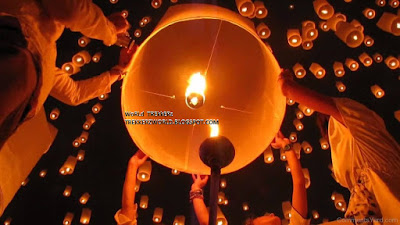 The lanterns are made out of oiled rice paper, sheepskin, bamboo filaments, silk, or satin outfitted with a large candle at the bottom. As the lamps heat up, they take flight and linger in the air for as long as the flame still flickers.
The lanterns are made out of oiled rice paper, sheepskin, bamboo filaments, silk, or satin outfitted with a large candle at the bottom. As the lamps heat up, they take flight and linger in the air for as long as the flame still flickers.After ambling a half-mile down Old Street, you’ll arrive at the main stage. In contrast to the down-home feel of the town’s principle road, you can tell that a major production has been bustling on this side of town: big screens, television cameras, celebrities and musicians are everywhere. The scene requires enormous crowd control, the ushering people in and out of prime viewing spots.
Tips:
Upon arriving in Pingxi, you can either walk along Old Street or head directly to the main stage. We’d recommend hitting the Old Street first to get a more intimate experience of the main commercial thoroughfare before the 80,000 festival attendees arrive.
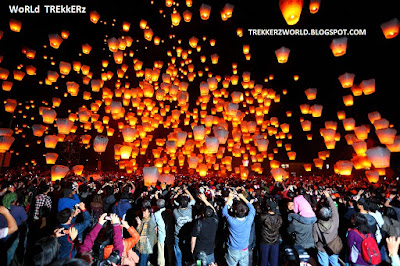 Arrive before the crowds. Aim to get to Old Street before it gets too congested. If you have some extra time to kill, visit the surprisingly fascinating Coal Mine Museum.
Arrive before the crowds. Aim to get to Old Street before it gets too congested. If you have some extra time to kill, visit the surprisingly fascinating Coal Mine Museum.Make a list of your aspirations in advance. In the flurry of the festival, you won’t have time for an introspective moment.
Practice your night shots. Bring a camera even if you’re not a shutterbug. Beauty surrounds you everywhere.
Plan return transportation carefully. The shuttle bus going back to Taipei starts getting very crowded at around 8pm. If you’re in a rush to get back, consider buying a standing-room ticket.
i am not responsible Of any Mistake / USE Of any Kind of Bad Words { Wording } / Any Word
Copy Write All ideas Picture & Articles / Data From Google , Wikipedia & Google Sites & Google Others Web Sites
Thanks Read
Always Remember me in your Payers
Muhammad Younis
Trekker & Mountaineer
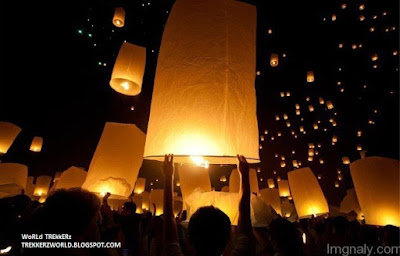
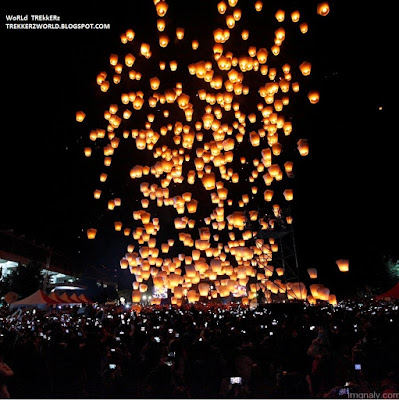
I got such a good information on this topic its very interesting one.
ReplyDeleteBest Psychic Reader in Toronto | Genuine Astrologer in Toronto | Astrology Center in Toronto | Astrology Services in Toronto
Good work! I always like to leave comments whenever I see something unusual or impressive. I think we must appreciate those who do something especial.
ReplyDeleteFamous Astrologer in Vancouver | Astrologer Center in Vancouver | Best Vedic Astrologer in Vancouver | World Famous Indian Astrologer in Toronto
lantern festival legend
ReplyDeletelantern festival in india
lantern festival near me
lantern festival japan
lantern festival thailand